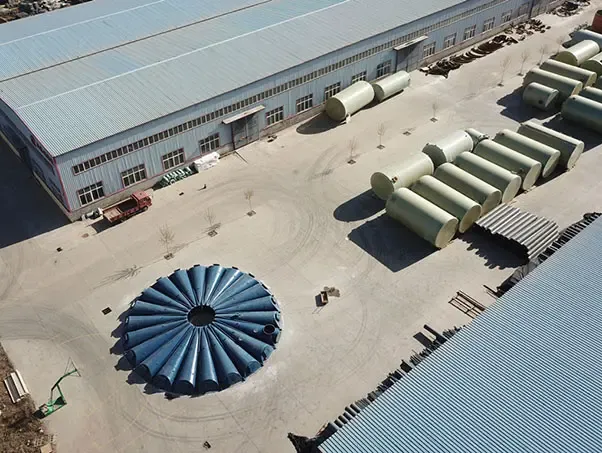
-
 Afrikaans
Afrikaans -
 Albanian
Albanian -
 Amharic
Amharic -
 Arabic
Arabic -
 Armenian
Armenian -
 Azerbaijani
Azerbaijani -
 Basque
Basque -
 Belarusian
Belarusian -
 Bengali
Bengali -
 Bosnian
Bosnian -
 Bulgarian
Bulgarian -
 Catalan
Catalan -
 Cebuano
Cebuano -
 China
China -
 China (Taiwan)
China (Taiwan) -
 Corsican
Corsican -
 Croatian
Croatian -
 Czech
Czech -
 Danish
Danish -
 Dutch
Dutch -
 English
English -
 Esperanto
Esperanto -
 Estonian
Estonian -
 Finnish
Finnish -
 French
French -
 Frisian
Frisian -
 Galician
Galician -
 Georgian
Georgian -
 German
German -
 Greek
Greek -
 Gujarati
Gujarati -
 Haitian Creole
Haitian Creole -
 hausa
hausa -
 hawaiian
hawaiian -
 Hebrew
Hebrew -
 Hindi
Hindi -
 Miao
Miao -
 Hungarian
Hungarian -
 Icelandic
Icelandic -
 igbo
igbo -
 Indonesian
Indonesian -
 irish
irish -
 Italian
Italian -
 Japanese
Japanese -
 Javanese
Javanese -
 Kannada
Kannada -
 kazakh
kazakh -
 Khmer
Khmer -
 Rwandese
Rwandese -
 Korean
Korean -
 Kurdish
Kurdish -
 Kyrgyz
Kyrgyz -
 Lao
Lao -
 Latin
Latin -
 Latvian
Latvian -
 Lithuanian
Lithuanian -
 Luxembourgish
Luxembourgish -
 Macedonian
Macedonian -
 Malgashi
Malgashi -
 Malay
Malay -
 Malayalam
Malayalam -
 Maltese
Maltese -
 Maori
Maori -
 Marathi
Marathi -
 Mongolian
Mongolian -
 Myanmar
Myanmar -
 Nepali
Nepali -
 Norwegian
Norwegian -
 Norwegian
Norwegian -
 Occitan
Occitan -
 Pashto
Pashto -
 Persian
Persian -
 Polish
Polish -
 Portuguese
Portuguese -
 Punjabi
Punjabi -
 Romanian
Romanian -
 Russian
Russian -
 Samoan
Samoan -
 Scottish Gaelic
Scottish Gaelic -
 Serbian
Serbian -
 Sesotho
Sesotho -
 Shona
Shona -
 Sindhi
Sindhi -
 Sinhala
Sinhala -
 Slovak
Slovak -
 Slovenian
Slovenian -
 Somali
Somali -
 Spanish
Spanish -
 Sundanese
Sundanese -
 Swahili
Swahili -
 Swedish
Swedish -
 Tagalog
Tagalog -
 Tajik
Tajik -
 Tamil
Tamil -
 Tatar
Tatar -
 Telugu
Telugu -
 Thai
Thai -
 Turkish
Turkish -
 Turkmen
Turkmen -
 Ukrainian
Ukrainian -
 Urdu
Urdu -
 Uighur
Uighur -
 Uzbek
Uzbek -
 Vietnamese
Vietnamese -
 Welsh
Welsh -
 Bantu
Bantu -
 Yiddish
Yiddish -
 Yoruba
Yoruba -
 Zulu
Zulu
frp boat
The Essence of FRP Boats A Blend of Innovation and Utility
Fiber Reinforced Plastic (FRP) boats have revolutionized the maritime industry, creating a substantial impact on both recreational and commercial boating. These vessels, composed of a composite material known for its strength and lightweight properties, offer numerous advantages that traditional materials, such as wood or metal, cannot match. This article explores the key features, benefits, and applications of FRP boats, emphasizing their growing significance in modern boating.
Lightweight Strength and Durability
One of the most compelling attributes of FRP boats is their lightweight nature. The use of fiberglass reinforced with plastic resins allows for designs that are not only strong but also much lighter than their wooden or metallic counterparts. This lightweight characteristic enables easier handling, increased speed, and improved fuel efficiency, all of which are crucial for both recreational users and commercial operators. The reduction in weight also facilitates the construction of larger vessels, ensuring stability without compromising performance.
Moreover, FRP boats exhibit exceptional resistance to corrosion, rot, and UV damage. Unlike wooden boats, which are susceptible to environmental degradation and require regular maintenance, FRP boats can withstand harsh marine conditions with minimal upkeep. This durability translates to lower long-term costs for boat owners, making FRP an economically savvy choice for those looking to invest in maritime craft.
Versatility in Design
The versatility of FRP extends beyond its mechanical properties and into its design capabilities. The molding process of fiberglass allows for a wide range of shapes and sizes, giving designers unparalleled freedom to create innovative models tailored to specific needs. Whether for fishing, luxury cruising, or commercial transportation, FRP boats can be customized to meet the operational demands of various users. This adaptability extends to incorporating additional features such as built-in storage, comfortable seating arrangements, and advanced navigation systems.
frp boat

As technology continues to advance, the design possibilities for FRP boats are expanding even further. Manufacturers are now exploring ways to incorporate smart technology, such as integrated electronics and energy-efficient systems, making these vessels not just boats, but hubs of modern maritime ingenuity.
Environmental Considerations
In an era where sustainability is at the forefront of many discussions, FRP boats also offer an advantage. The production process of FRP can be more sustainable than traditional boat materials, particularly when considering the lifecycle of the boats. Many manufacturers are now focusing on using recycled materials and renewable resources in their production processes. Additionally, the energy efficiency of FRP vessels can lead to reduced fuel consumption and lower emissions, aligning with global initiatives aimed at preserving marine ecosystems.
Conclusion A Bright Future for FRP Boats
As we navigate the waters of technological advancement and environmental awareness, FRP boats represent a significant shift in maritime design and usage. Their unique blend of lightweight strength, design versatility, and resilience against the elements makes them an appealing option for a variety of boaters. From weekend fishing enthusiasts to professional mariners, the advantages offered by FRP boats are hard to overlook.
In conclusion, the future of boating lies in embracing innovative materials like FRP. With ongoing developments in technology and design, it is likely that we will continue to see an increased adoption of FRP boats across the globe. These vessels not only promise enhanced performance and durability but also present an opportunity for a more sustainable approach to boating, ensuring that our waters remain pristine for generations to come. Whether you are a seasoned sailor or a novice, the benefits of FRP boats are clear they are not just a trend—they are the future of boating.
Latest news
-
Exploring the Benefits of Top Hammer Drifter Rods for Enhanced Drilling PerformanceNewsJun.10,2025
-
High-Precision Fiberglass Winding Machine for GRP/FRP Pipe Production – Reliable & Efficient SolutionsNewsJun.10,2025
-
FRP Pipes & Fittings for Shipbuilding - Corrosion-Resistant & LightweightNewsJun.09,2025
-
Premium FRP Flooring Solutions Durable & Slip-ResistantNewsJun.09,2025
-
Premium Fiberglass Rectangular Tanks Durable & Lightweight SolutionNewsJun.09,2025
-
Tapered Drill String Design Guide Durable Performance & UsesNewsJun.09,2025









